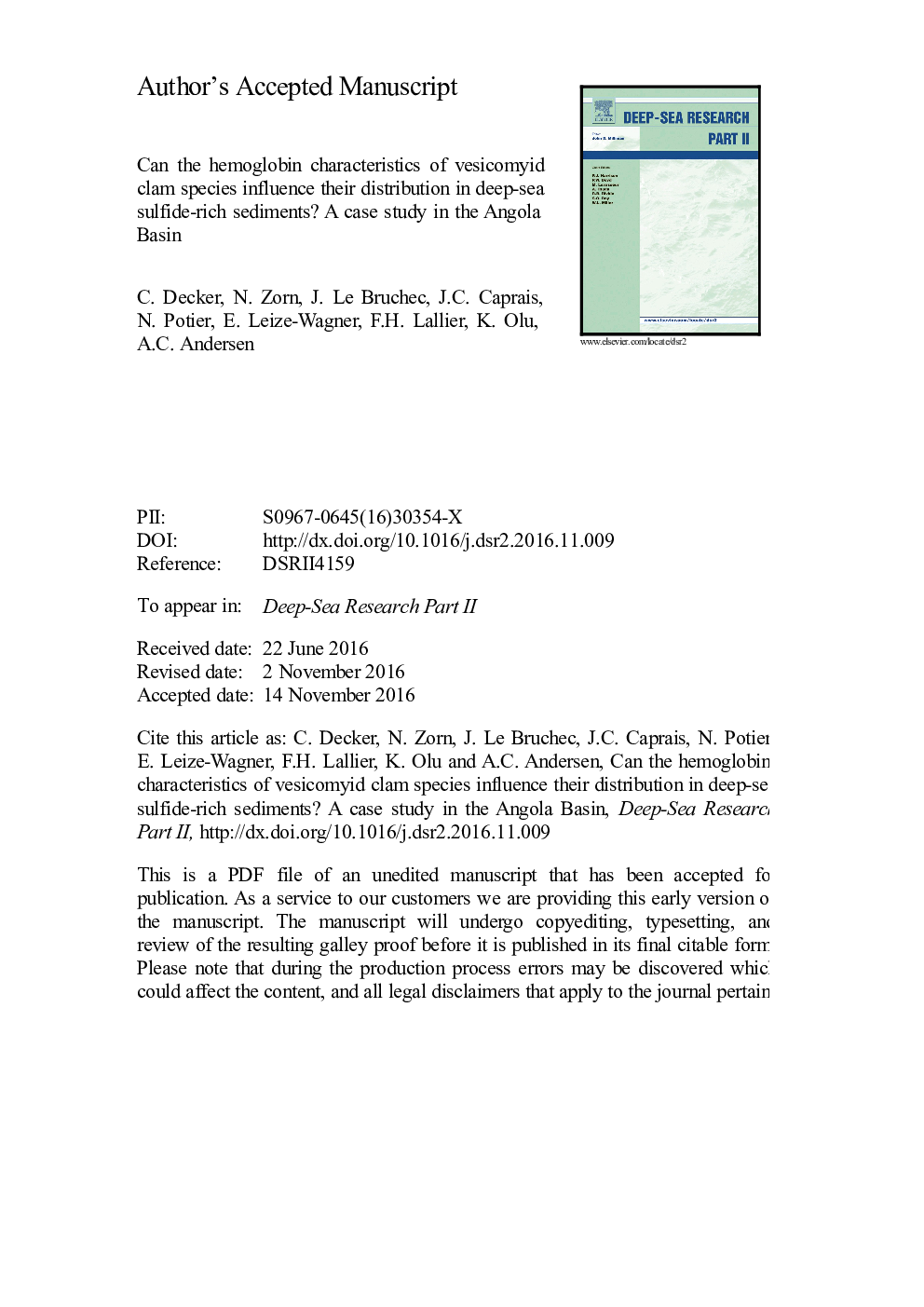| کد مقاله | کد نشریه | سال انتشار | مقاله انگلیسی | نسخه تمام متن |
|---|---|---|---|---|
| 5764810 | 1626400 | 2017 | 41 صفحه PDF | دانلود رایگان |
عنوان انگلیسی مقاله ISI
Can the hemoglobin characteristics of vesicomyid clam species influence their distribution in deep-sea sulfide-rich sediments? A case study in the Angola Basin
دانلود مقاله + سفارش ترجمه
دانلود مقاله ISI انگلیسی
رایگان برای ایرانیان
کلمات کلیدی
موضوعات مرتبط
مهندسی و علوم پایه
علوم زمین و سیارات
زمین شناسی
پیش نمایش صفحه اول مقاله

چکیده انگلیسی
Vesicomyids live in endosymbiosis with sulfur-oxidizing bacteria and therefore need hydrogen sulfide to survive. They can nevertheless live in a wide range of sulfide and oxygen levels and depths, which may explain the exceptional diversity of this clam family in deep-sea habitats. In the Gulf of Guinea, nine species of vesicomyid clams are known to live in cold-seep areas with pockmarks from 600 to 3200Â m deep, as well as in the organic-rich sediments of the Congo deep-sea fan at 5000Â m deep. Our previous study showed that two species living in a giant pockmark have different oxygen carriers, suggesting different adaptations to hypoxia. Here, we studied the hemoglobin structure and oxygen affinity in three other species, Calyptogena valdiviae, Elenaconcha guiness and Abyssogena southwardae to determine whether the characteristics of their oxygen carriers contribute to their distribution in sulfide-rich sediments at a regional scale. Documenting pairwise species associations in various proportions, we give a semi-quantitative account of their local distribution and oxygen and sulfide measurements at seven sites. Mass spectrometry showed that each vesicomyid species has four intracellular monomeric hemoglobin molecules of 15-16Â kDa, all differing in their molecular mass. As expected, the monomers showed no cooperativity in oxygen binding. Their oxygen affinities were very high (below 1Â Torr), but differed significantly. C. valdiviae had the highest affinity and was dominant in the Harp pockmark, the site with the lowest oxygen content (half the value of fully oxygenated water). A. southwardae dominated in the Congo Lobe area, the site with the deepest sulfides. We discuss how hemoglobin may favor an active, vertical distribution of vesicomyids in sulfide-rich sediments.
ناشر
Database: Elsevier - ScienceDirect (ساینس دایرکت)
Journal: Deep Sea Research Part II: Topical Studies in Oceanography - Volume 142, August 2017, Pages 219-232
Journal: Deep Sea Research Part II: Topical Studies in Oceanography - Volume 142, August 2017, Pages 219-232
نویسندگان
C. Decker, N. Zorn, J. Le Bruchec, J.C. Caprais, N. Potier, E. Leize-Wagner, F.H. Lallier, K. Olu, A.C. Andersen,